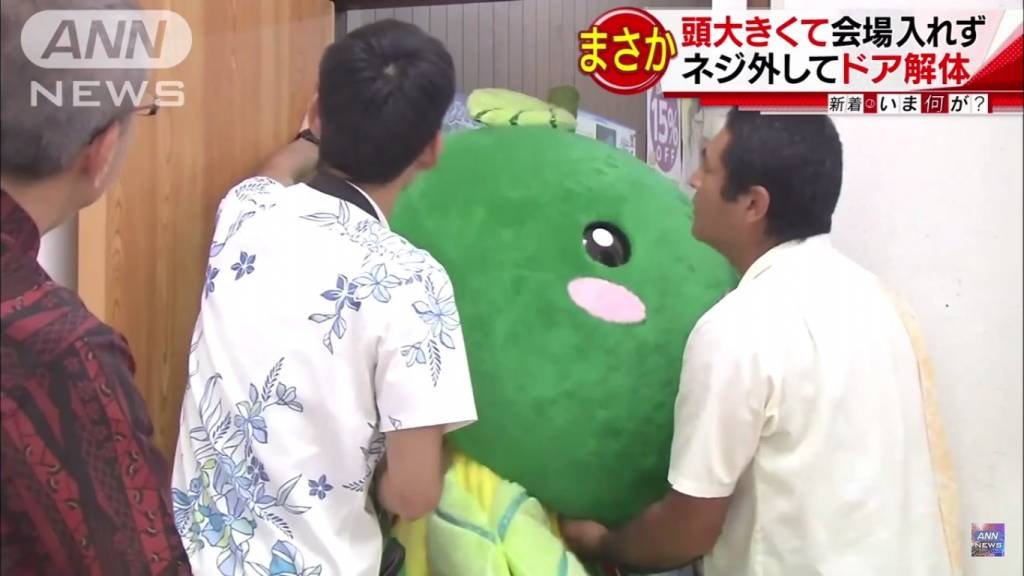Mascot Mania: Japan’s Yuru-Charas

While modern Japanese society advantages conventionality, it does not hide its eccentric side.
With its “kawaii” culture promoted globally, yuru-charas seem to be reserved for the country only. Roughly translated, yuru-chara means “loose characters” and is the word used for the thousands of mascots found in Japan.
Follow Sabukaru into the parade of Japanese mascots, from dinky to gigantic, from fuzzy to ugly, but mostly, unquestionably cute.
Yuru-chara Mikke (left) and Sanomaru (right).
Yuru-chara consists of three rules. According to illustrator and cultural critic Jun Miura, they should “convey a strong message of love for one's hometown or local region, [have] movements or behavior [that] should be unique and unstable or awkward [and] the character should be unsophisticated or laid-back [yurui] and lovable.” These mascots are used to promote a region, a governmental institution, companies, and events. In fact, some jails in Japan have mascots, too.
Kumamon meeting fans.
These characters are manga-like, with trendy and cute characteristics, as well as sometimes being kimo-kawaii, which means “creepy cute”. They take inspiration from animals ranging from puppies to fish, but also from yokai [Japanese folklore monsters] and food, like tangerines, potatoes, and natto, and each mascot has a distinct personality and likes and dislikes.
The whole purpose of these mascots is to make their cause stand out and attract positive attention. The most successful yuru-charas are able to generate immense revenue, and, in 2012, this industry was worth around 16 billion USD.
Yuru-chara plushies.
Sometimes, this mascot mania goes a little overboard. A few years ago, Osaka had a mascot per 6 000 residents, which caused some concern within the local government. Additionally, every year, there is a Yuru-Chara Grand Prix, a festival for these mascots which gives them a chance to be “mascot of the year” through the votes of the attendees and, in 2015, over 1 700 yuru-charas applied for an entry. Also, there are mascot training schools where people learn to become professional mascots.
A yuru-chara event.
Here are Sabukaru’s favorite mascots.:
Kumamon
Probably the most famous yuru-chara, Kumamon is a bear representing Kumamoto.
Pipo-kun
Tokyo’s police mascot, who we can see plastered all over safety posters in the city.
Domo-kun
The iconic mascot of NHK, a Japanese broadcasting organization.
Nishiko-kun
Cute but a little unsettling, Nishiko-kun is a leggy roof tile from Nishi-Kokubunji.
Hikonyan
Hikonyan is samurai cat from Hikone. It takes its name from its region and the Japanese onomatopoeia for “meow”.
nakanon
A friendly lotus root mascot representing Nakanoshima in Nagaoka city.
Chiitan
A chaotic otter with a wide internet following from Susaki. Chiitan caused a controversy in 2019 for “being a bad example” due to its erratic character.
Kapal
A Japanese folklore monster, precisely a kappa, from Shiki.
Jimmy Hattori
Jimmy is one of those weird mascots that support important causes. He is a ninja-condom character who promotes safe sex and AIDS awareness.
Melon-kuma
Known to be the creepiest yuru-chara, Melon-kuma is a bear with a melon head from Yubari.
About the Author:
Mizuki Khoury
Born in Montreal, based in Tokyo. Sabukaru’s senior writer and works as an artist under Exit Number Five.





